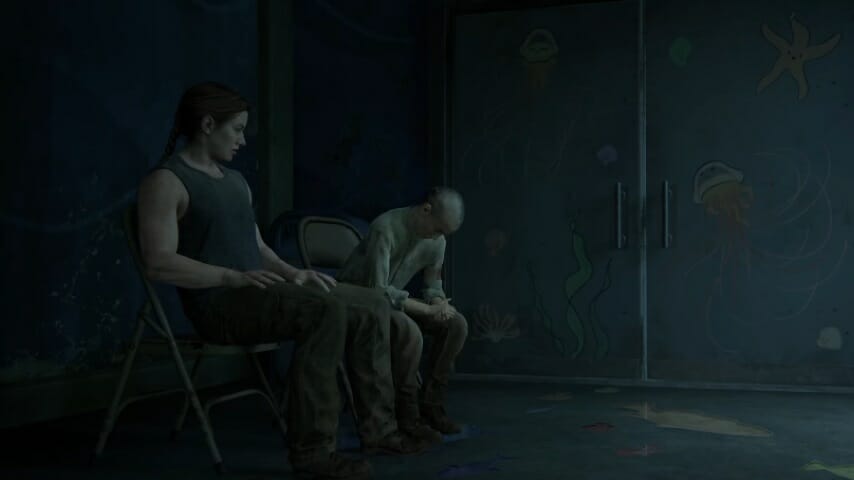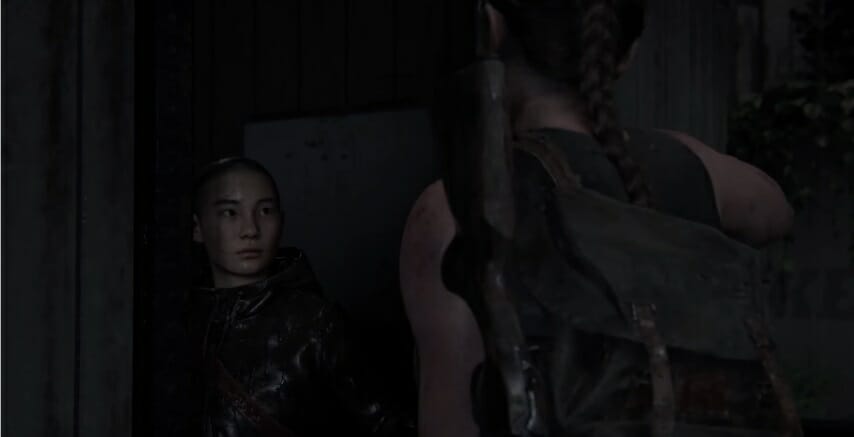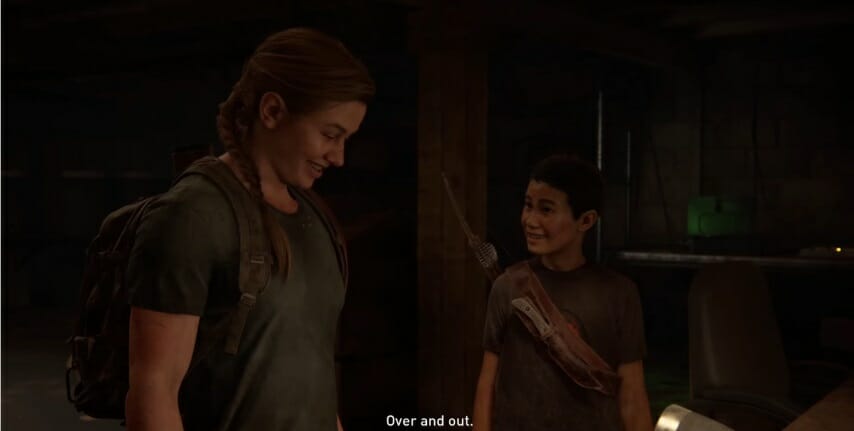The Cisgender Voyeurism of The Last of Us Part II

I think I’m expected to celebrate that a trans character is prominently featured in a AAA videogame. I think people expect to see me celebrating a trans character being prominently featured in a AAA videogame. Because after playing The Last of Us Part II, it seems like the only reason trans people are made broadly visible is to make cis voyeurs feel good about themselves.
Media has always struggled with the existence of transgender identities. I’m not even limiting this to representation; media has just been historically transphobic. From jokes about gender expression, to sex-based power dynamics between characters, and including representation, the history of understanding trans existence in media sucks.
The Last of Us Part II attempts to tell a story that is inclusive of trans identities with the introduction of Lev, a trans man appearing in the second half of the game. When Abby ventures to go find her ex, Owen, she is captured and hanged by a religious group called SCARS. Lev and his sister, Yara, save Abby while they are also running away from SCARS. Later we learn that they were running away because the SCARS were going to punish Lev for standing strong in his identity as a man and shaving his head.
As a consequence of Lev standing up for himself, he is continuously placed into varying degrees of violence over the course of the game.
On a small scale, the problems with Lev are clear throughout his entire journey with Abby. There are three different times where she asks Lev why he shaved his head, even when he tries to avoid the subject. For Abby, and the player who experiences the world through her, Lev isn’t a character to be respected but investigated.

Her curiosity never really stops unless she is in fear of losing her own life. So we never really understand Lev as a person outside of this cisgender investigative lens. This becomes especially clear when Abby learns more about Lev from Yara.
It’s a scene that makes my head and stomach lurch while watching. The two discuss how impossible it would be for Lev to go back home, how Yara didn’t initially understand Lev, and that she told him to keep it to himself when he came out to her. For me, the pain that comes from viewing this scene isn’t just because of this revelation about Lev’s domestic violence. Rather, most of this pain comes from a cis family member revealing trauma to Abby that Lev hasn’t decided he wants to share. Because of that, the pain doesn’t even come from Lev’s perspective; instead its a guilt-ridden account from a cis person. It’s clear in this moment that Lev’s story isn’t made for trans people, but to give cisgender players a space to connect with their guilt and pity for trans people.
And all of these accounts just aren’t enough for The Last of Us because the game revels in characters facing the most horrendous violence possible. After the conversation between Abby and Yara, they find Lev has gone back to his mom and they go after him. When they finally reach him, they find the mother dead and Lev hiding in a corner crying. His skin is riddled with cuts. Blood falls down his face alongside his tears.
“I tried to make her understand but she….she just kept yelling.”
I understand that The Last of Us is a series that continuously puts characters in harm’s way. Every inhabitant of this world is placed into traumatic and violent situations because of the terrible conditions in which they live. But Lev is the only trans character whose violence is composed of the domestic emotional and physical abuse alongside the violence of the new world. And since he is the only trans character, period, this becomes the game’s only representation of trans people. It communicates that even when all the structures of the world fall away and communities relearn how to come together, trans people will forever be made to face the same violence they’ve always known.
Lev isn’t the only character that faces this old world violence. Two queer women, Ellie and Dina, are harassed by a community member for kissing at the end of the game. Yet Ellie and Dina are not defined by this moment. Most of the game these two are faced with the common problems of the new world: pregnancy, revenge, well-being, just like everyone else.
It’s so upsetting that this is the way large-scale games have decided to put trans people on display. The treatment of trans issues and representation in big budget games ranges from terrible to just non-existent. This is why the trans character and narrative of The Last of Us Part II is so disappointing, because it needs to be better than this. That’s also why Lev is more complicated than a discussion of “good” or “bad” trans representation.

What makes Part II so complex is that they did some things right. They got trans actor Ian Alexander to play a trans character, something most games neglect to do. Lev’s identity occasionally does go beyond his transness; he’s scared of sharks and has some great moments talking Abby through her fears. That’s what makes Lev so complicated and frustrating. I love Lev because he is a really cool trans character. But I can only love Lev after being reminded that he wasn’t made for me.
Trans people have been finding the good in bad media for years. This is especially true in games where the most we get is the repeated display of cisgender actors and characters trying to pull off trans representation. As Kenneth Sheppard wrote on the game last week, “Queer spaces are not a monolith.”
But I’m also tired of my few Queer spaces being celebrated only for my trans identity to feel uncomfortable in them. It makes me not only feel excluded as a Queer person, but also wonder if we have aimed too low by making representation the goal instead of divesting from the entire industry. Because if having someone with similar experiences on screen is all that matters, others will be left behind no matter what.
The Last Of Us Part II is a production of game labor violence, but it’s also a reproduction of violence on the trans individual. Everytime the game is played Lev must repeat the cycles of trauma for the cisplayer’s eye, perpetuating the idea that trans identities must exist in a state of cis-inflicted violence just to be considered. Meanwhile the game is largely praised for its queer representation. Critics and developers elevate the trans voices who validate their feelings while ignoring the critiques.
Perhaps Lev’s cycle of violence isn’t just a disservice for trans narratives, but derisively a poisonous reminder of the status quo.
Waverly is a trans game artist and freelance writer. She has written at Uppercut, Into The Spine, and Fanbyte. You can find her on Twitter @hotelbones.